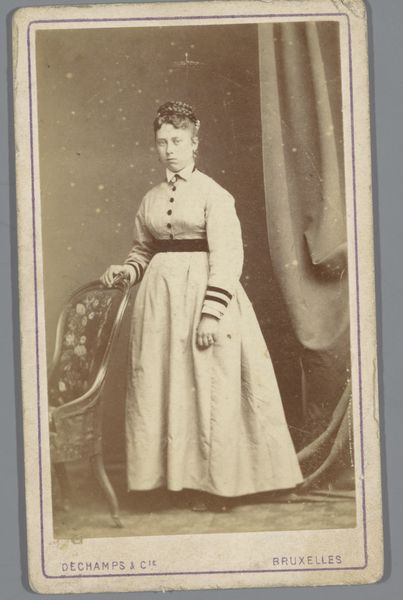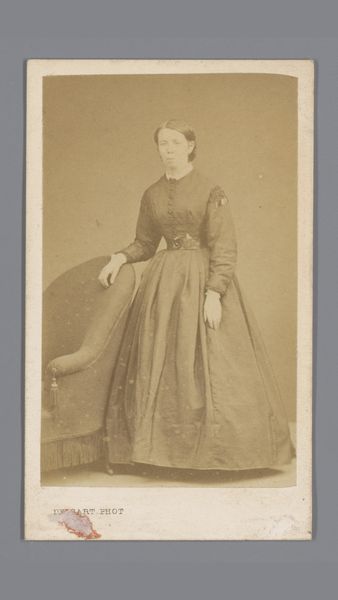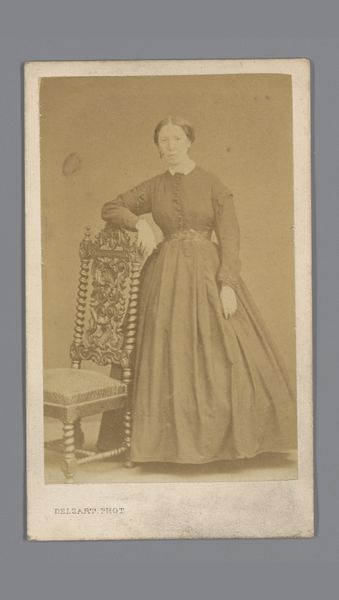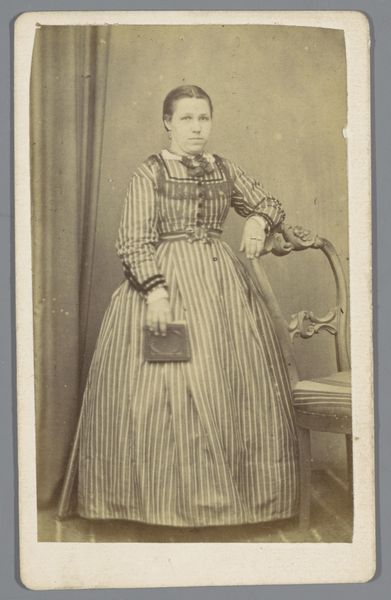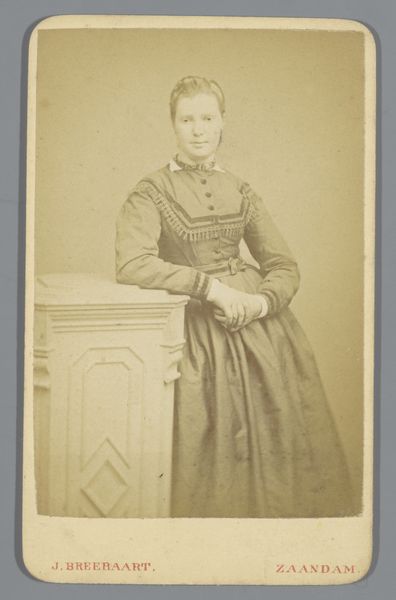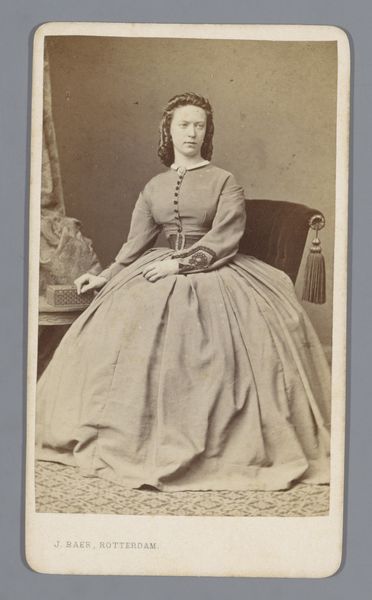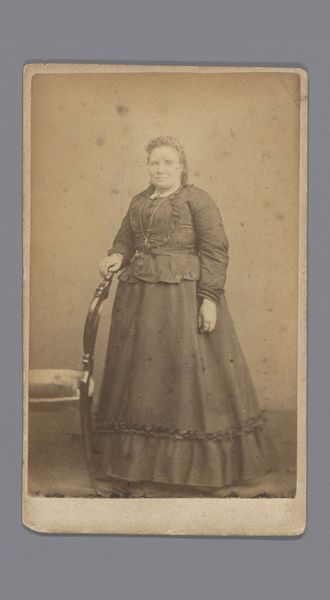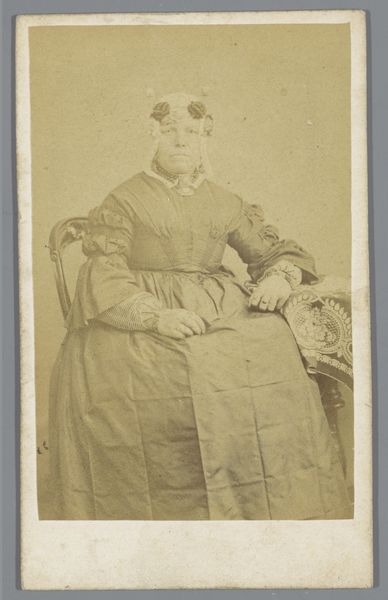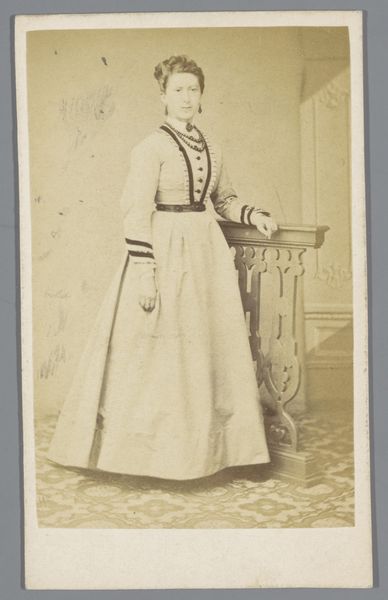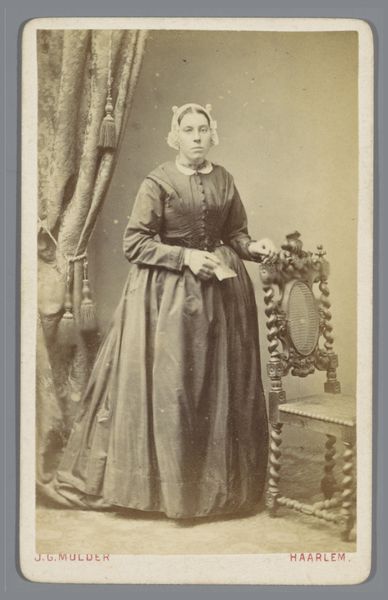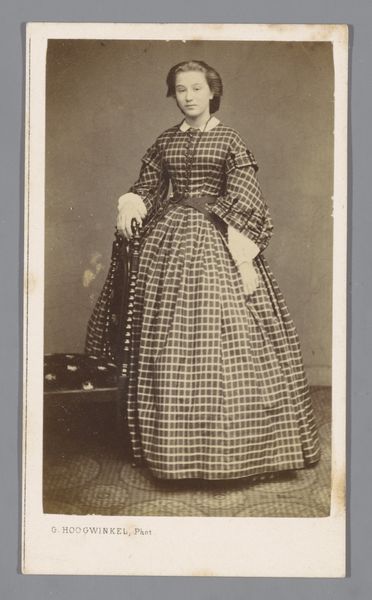
daguerreotype, photography, gelatin-silver-print, albumen-print
#
portrait
#
16_19th-century
#
daguerreotype
#
photography
#
gelatin-silver-print
#
albumen-print
Dimensions: height 111 mm, width 66 mm
Copyright: Rijks Museum: Open Domain
Curator: Well, here we have a carte-de-visite, "Portret van een onbekende vrouw, staande naast een stoel" attributed to S. van Caspel & Stapert. Dating from around 1868-1870, it exemplifies the photographic practices of the era. Editor: There's something quietly compelling about this image. The neutral tones lend an air of gravitas. You notice the careful composition. It seems deliberately constructed to present a specific image of femininity, or perhaps gentility. Curator: Exactly! This photographic process, whether albumen or gelatin-silver, demanded careful attention. Think about the preparation of the plates, the long exposure times... it was laborious. A photographic studio wasn't just a place, it was an early instance of mass production and consumption for portraiture. How did this shape societal understanding? How did it make portraiture, and therefore representation, newly accessible? Editor: Good points. This democratizing potential is crucial. Also consider the role of photography in solidifying middle-class values. Owning such an object signaled respectability, and social standing. Look at her dress. It’s fairly simple but made from fine fabric. How that’s fabricated speaks volumes. What can we tell about her labor and position in the social strata? Curator: Precisely. Her posture, the minimal jewelry, the subdued backdrop, it all speaks to an emerging sense of bourgeois identity. And let’s not overlook the institution of photography itself. These studios, like van Caspel & Stapert, provided access to these sorts of idealized representation. Editor: And while the subject is "an unknown woman", that makes her even more representative, perhaps even more powerful. An interesting tension there! This isn’t the portrait of some great ruler or high society personality that you see collected by and displayed at important institutions. This picture presents a vision of commonplace, emerging wealth that art usually neglects. Curator: Absolutely! Seeing it today reminds us of photography’s role as a recorder of social trends. These images documented societal transitions as the world redefined identity in the age of the industrial era and photography, but, the question now arises. Where does she fit? Editor: So many questions, and I feel they help us approach her circumstances more deeply and ethically. We now have another face we can add to the long discussion surrounding image-making!
Comments
No comments
Be the first to comment and join the conversation on the ultimate creative platform.
